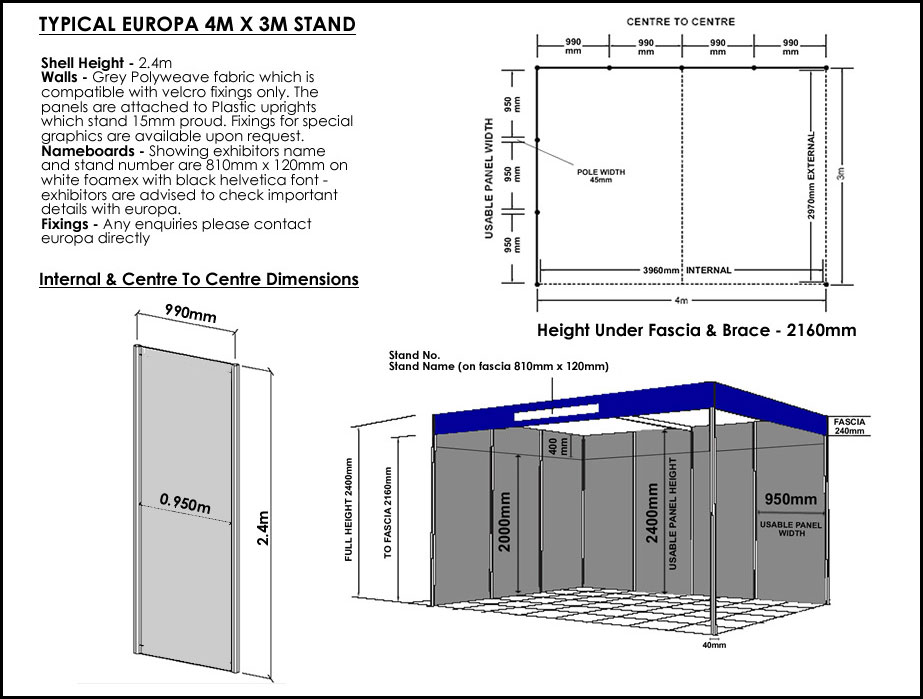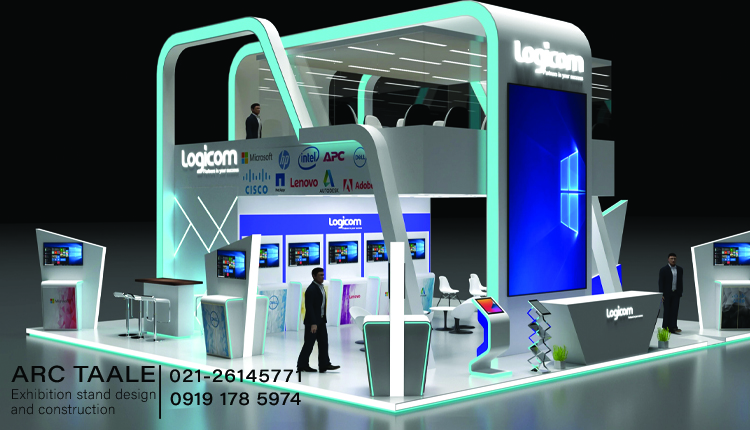Setting up a display stand involves several steps to ensure it effectively showcases your products or information and attracts the attention of attendees. Here’s a general guide on how to set up a display stand.
What is a display stand?
In the realm of presentations, exhibitions, and retail spaces, the display stand emerges as a versatile and indispensable tool, seamlessly blending aesthetics with practicality. These structures serve as dynamic canvases, enabling the showcased items to transcend mere objects and become compelling narratives. Display stands are not mere pedestals; they are the silent orchestrators that amplify the visual symphony of any space they inhabit.
Captivating Aesthetics
At its core, a display stand is a visual spectacle. Crafted with an artistic touch, it transforms the mundane into the extraordinary. The curvature of its design, the choice of materials, and the interplay of colors converge to create a captivating stage where products and ideas take center stage. Whether it’s an elegant art exhibition or a bustling trade show, the display stand sets the tone, inviting onlookers into a world where every detail matters.
Functional Brilliance
Beyond their aesthetic allure, display stands are meticulously engineered to fulfill a myriad of functional roles. They are the unsung heroes that organize chaos, providing a structured platform for products to shine. Adjustable shelves, strategic lighting, and modular designs are the tools of this functionality, ensuring that each item displayed receives its moment in the spotlight. From retail spaces to museum exhibits, the display stand choreographs an intricate dance of visibility and accessibility.
Adaptability in Design
A hallmark of the display stand is its chameleon-like ability to adapt to diverse environments and requirements. Whether it’s a sleek, minimalist design for a modern art gallery or a robust, weather-resistant structure for an outdoor event, these stands evolve to complement their surroundings. The flexibility in design ensures that the displayed content is not just seen but experienced, making the display stand an indispensable storyteller.
Enhancing Brand Identity
In the corporate realm, display stands become powerful ambassadors of brand identity. They are not merely holders of products; they are extensions of a company’s ethos. Custom branding elements, logo placements, and thematic color schemes transform the stand into a brand sanctuary, where every exhibit becomes a seamless part of the larger narrative.
In the grand tapestry of visual communication, the display stand is the unifying thread that weaves together creativity and functionality. It is the silent guardian that ensures each exhibit, product, or idea is presented in its best light. From art galleries to retail spaces, from corporate events to trade shows, the display stand is a canvas awaiting the stroke of innovation, ready to transform any space into a showcase of excellence.
What are the elements of a display stand?
A display stand, with its multifaceted role in showcasing products, ideas, and brands, is a carefully orchestrated symphony of design elements. Each component plays a pivotal role in creating a harmonious visual experience that captivates and communicates effectively. Let’s delve into the intricate details, unraveling the elements that collectively elevate a display stand into a work of functional art.
Structure and Form
At the core of every display stand lies its structural integrity. The framework sets the stage, determining the overall form and shape. From towering pillars to sleek modular designs, the structure not only supports the displayed items but also establishes the stand’s visual identity.
Material Selection
The choice of materials contributes significantly to the stand’s aesthetics and durability. Whether it’s the warmth of wood, the modern allure of metal, or the versatility of acrylic, the selected materials convey a visual language that aligns with the brand or theme being presented.
Graphics and Branding
Graphics and branding elements transform a display stand into a branded showcase. Logos, imagery, and thematic graphics create a visual narrative that not only reinforces brand identity but also guides the viewer’s attention to key messages and products.
Lighting Techniques
Lighting is the unsung hero, sculpting the ambiance and accentuating the displayed items. Whether it’s ambient lighting for an art exhibit or focused spotlights for retail products, the right lighting technique enhances visibility and adds a touch of drama to the overall presentation.
Shelving and Display Surfaces
The practicality of a display stand comes to the forefront with well-designed shelves and display surfaces. Adjustable shelving, rotating platforms, and strategic arrangements ensure that each product receives its moment in the spotlight, fostering accessibility and engagement.
Interactivity and Technology Integration
In the age of digital engagement, display stands have evolved to incorporate interactive elements and technology. Touchscreens, augmented reality, or interactive displays bring a dynamic dimension, fostering engagement and creating memorable experiences for visitors.
Space Utilization and Layout
Efficient use of space is a hallmark of a well-designed display stand. The layout should facilitate smooth traffic flow, encourage exploration, and strategically position key elements for maximum impact. A thoughtful arrangement ensures that the stand communicates its message cohesively.
How do you set up a display stand?
Setting up a display stand is not merely a logistical task; it’s a meticulous art that involves a strategic blend of creativity, precision, and attention to detail. Whether it’s for a trade show, retail space, or an art exhibition, the process of transforming an empty space into a captivating showcase demands a thoughtful approach. Let’s embark on a journey through the step-by-step process of setting up a display stand, unraveling the secrets behind a visually compelling presentation.
Planning and Conceptualization
Before diving into the physical setup, thorough planning is essential. Define the objectives, identify the target audience, and conceptualize the theme or narrative you want to convey. A well-thought-out plan serves as the blueprint for the entire setup process.
Gather Necessary Materials and Tools
Ensure that all the materials, tools, and components needed for the display stand setup are readily available. This includes the structural elements, branding materials, lighting fixtures, and any technology or interactive features you plan to incorporate.
Establish the Framework
Begin by setting up the structural framework of the display stand. This involves assembling the main components, whether it’s modular panels, pillars, or a customized structure. The framework provides the skeleton upon which the visual narrative will be built.
Branding and Graphic Installation
Once the structure is in place, proceed to install branding materials and graphics. Apply logos, thematic imagery, and any promotional messages that align with the overall theme. This step transforms the stand from a structural entity to a branded showcase.
Lighting Placement and Adjustment
Strategically place and adjust lighting fixtures to enhance the visibility and aesthetics of the displayed items. Experiment with ambient lighting, spotlights, or LED accents to create a visually captivating atmosphere that complements the overall design.
Arrange Displayed Items
Carefully arrange the products or exhibits on the designated shelves or display surfaces. Consider the flow of traffic, focal points, and the overall visual hierarchy. Ensure that each item is positioned to maximize visibility and engagement.
Setting up a display stand is a harmonious blend of creativity, organization, and technical precision. From the initial planning stages to the final quality check, each step contributes to the overall success of the presentation. A well-executed setup not only showcases the displayed items but also communicates a compelling story that resonates with the audience.


